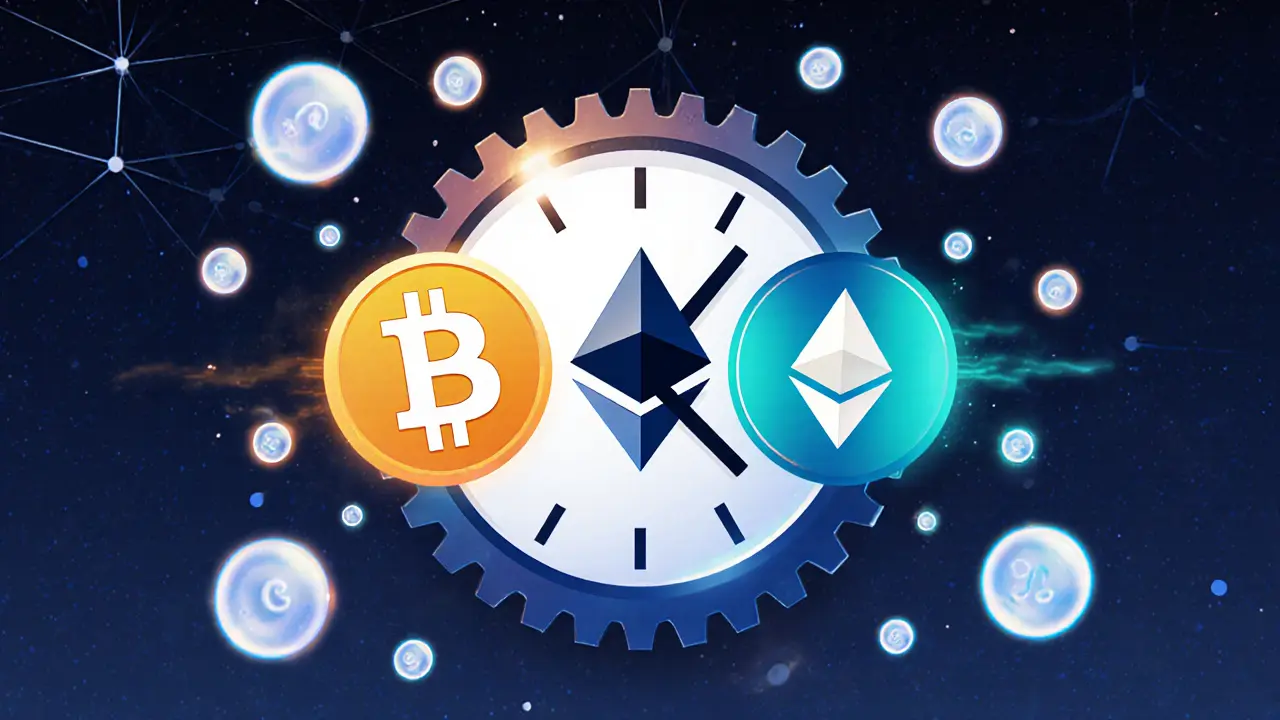Block Time in Crypto: What It Is and Why It Matters for Trading and Security
When you send Bitcoin or Ethereum, you’re not just clicking a button—you’re waiting for a block time, the average time it takes for a new block of transactions to be added to a blockchain. Also known as block interval, it’s the heartbeat of any crypto network. If block time is too slow, your trade sits for minutes. If it’s too fast, the network gets unstable. It’s not just a technical detail—it’s what decides whether your transaction clears before the price moves.
Block time directly shapes how you use crypto. On Bitcoin, with its 10-minute block time, you wait longer for confirmations, which makes it better for storing value than spending. On Solana, with a 400-millisecond block time, you can trade, swap, or join an airdrop like ELIXIR AI or KaiDex V3 almost instantly. That speed matters when you’re chasing a token launch or trying to avoid slippage. But speed isn’t free—faster block times mean more orphaned blocks and higher risk of double-spends unless the network has strong consensus rules. That’s why networks like Ethereum 2.0 and KardiaChain tweak block time carefully, balancing speed with security.
Block time also connects to mining difficulty, the measure of how hard it is for miners to solve the cryptographic puzzle to add a new block. When more people mine, difficulty rises to keep block time steady. If miners leave, difficulty drops. This self-adjusting system keeps the chain running smoothly—even when traffic spikes, like during a big ONUS airdrop or sudden surge in P2P crypto trading in Nigeria or Algeria. But if block time suddenly changes without warning, like in some micro-cap tokens, it’s a red flag. It could mean centralization, poor code, or worse—a rug pull.
And it’s not just about speed. Block time affects fees. Networks with short block times, like BSC or Solana, can handle more transactions per second, keeping fees low. That’s why tokens like WENLAMBO or KittySpin often launch on these chains—they need fast, cheap confirmations to make their tokenomics work. Meanwhile, Bitcoin’s long block time means higher fees during peak times, which pushes users to Layer 2 solutions. If you’re trading crypto in a country under sanctions, like Iran or Venezuela, block time becomes a survival tool. Faster chains mean quicker access to stablecoins and fewer chances your transaction gets stuck or flagged.
So when you see a new crypto project, check its block time. Is it listed? Is it realistic? A project claiming ultra-fast transactions but with no public block time data? That’s a warning. The best crypto systems don’t just brag about speed—they prove consistency. Whether you’re holding Bitcoin, trading on KaiDex, or claiming a FORWARD airdrop, understanding block time helps you know what’s really happening behind the scenes. You’re not just watching prices—you’re watching time itself.
Below, you’ll find real-world examples of how block time impacts everything from airdrops to underground crypto markets—and what to look for when the network doesn’t behave the way it should.
What Is Block Time in Blockchain? Speed, Security, and Real-World Impact
Block time determines how fast transactions confirm on a blockchain. Bitcoin takes 10 minutes per block for security; Ethereum uses 12 seconds for DeFi; Solana hits under a second but risks outages. Learn how block time affects speed, safety, and real-world use.
read more

